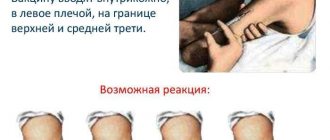08.08.2020 Alena Masheva Health
In the article we will consider the clinical picture, diagnosis and treatment of phimosis and paraphimosis. Phimosis is a congenital pathology of the foreskin in boys. In some cases, such an anomaly can occur independently during puberty, as well as as a result of various injuries and inflammatory processes in the genital organs. This disease is characterized by abnormal narrowing of the foreskin, due to which the head of the penis cannot pass through the narrow opening.
As a result, its exposure is impossible, very painful or difficult. Physiological phimosis is quite common. In almost all boys, in the first months of life, the head of the penis does not fully open from the preputial sac. By the age of six months, phimosis is observed in 83% of infants. In most boys (90%), this pathology goes away on its own by the age of 3. However, in cases where this has not happened by age 7, phimosis is classified as pathological.
What is phimosis and paraphimosis? This question interests many.
Paraphimosis
Paraphimosis in men is a rather dangerous disease associated with pinching of the glans penis. An unfavorable process develops due to the fact that the foreskin narrows significantly and begins to press on the delicate skin of the head. The development of paraphimosis begins after complete retraction of the flesh beyond the coronary groove, which changes blood circulation in the penis and leads to the rapid development of swelling of the penis and tissue necrosis.
Wounds and ulcers appear on the affected areas, and the pinched area with paraphimosis acquires a bluish tint and becomes swollen. In this case, the foreskin has the shape of a dense, swollen cushion, and the patient has problems with urination. Pathology is diagnosed taking into account information from the anamnesis and the results of a visual examination. The course of therapy can be based on manual reduction of the head or the use of surgical techniques, which is most important if paraphimosis is at an advanced stage. Surgical procedures include taking a puncture from swollen areas and circular excision of the flesh.
Let's look at the main differences between phimosis and paraphimosis.
What happens?
Cicatricial phimosis can be congenital (occurs in young children, and, as a rule, goes away on its own, without any treatment) or acquired (occurs after the child receives an injury or inflammatory disease).
In addition, the following forms of cicatricial phimosis are distinguished:
- Hypertrophic . In this case, there is excessive elongation of the skin of the foreskin, as a result of which it begins to resemble a specific proboscis. This problem is most relevant for young children.
- Atrophic . The skin is excessively adjacent to the head of the penis, which also interferes with its removal. This form is often further complicated by atrophy of the penis. Occurs in adolescence and adulthood.
How to treat synechiae of the foreskin in boys? Find out about this from our article.
How are these pathologies different?
Paraphimosis is a more acute condition when compared to phimosis. It develops, as a rule, after phimosis, but in some cases it can also occur as an independent phenomenon, acting as an unfavorable consequence of improper masturbation. If the essence of phimosis is a narrowing of the flesh, then paraphimosis is a more dangerous and complex condition in which a narrow prepuce compresses the head of the genital organ.
What is the difference between phimosis and paraphimosis? The main difference is that it is not possible to expose the head of the penis. When the first signs of this pathology appear, a man should consult a doctor. You can provide first aid to yourself by lubricating the head with a thick cream and trying to push it under the flesh. If this cannot be done, the patient must go to a medical facility.
Therapy at home
What to do with phimosis?
If this disease occurs in mild or restrained forms, then no surgical intervention will be required. It will be possible to treat the boy at home on his own, with the help of medications. But in order for the treatment of phimosis in children to proceed easily and quickly, without causing unnecessary problems, it is necessary to strictly follow all medical instructions. So, for example, it is very important to slowly develop the foreskin. How it's done:
- The skin of the prepuce should be gradually pulled over the head of the penis with gentle movements. It is very important not to apply significant force and not to perform this action through resistance. Every movement must be light and gentle. Especially if the disease affected a little boy. This exercise should be performed for about ten minutes about three times a day.
- If phimosis is mild, the foreskin can be gradually developed as follows - placing a finger between the head and the skin. But it is worth paying attention to the fact that this method is only allowed for teenage boys.
- Often, to secure the required position of the foreskin, you can use specialized rings that are placed on the head of the penis.
It is very important to remember some more nuances. For example, the fact that under the influence of warm water the skin softens and becomes easier to cope with. Therefore, it is better to perform the above-mentioned exercises during water procedures.
In the process of home therapy, drug treatment is carried out quite rarely. For the most part, the most you can expect is special creams and ointments that need to be rubbed into the skin of the prepuce with gentle, consistent movements.
And the whole point is that, despite the complete absence of any side effects from the use of drugs, doctors are very unfriendly about treating any degree of contraction with drugs.
Causes
The development of phimosis and paraphimosis begins due to concomitant pathologies and negative external factors, which include:
- diabetes;
- post-traumatic and burn scars;
- systemic skin diseases;
- balanoposthitis;
- balanitis
- chronic inflammation of the genital organ, which is not bacterial in nature (results from dermatological problems, allergic reactions, mechanical abrasions and injuries);
- venereal diseases (primary stages of gonorrhea and syphilis);
- candidiasis;
- penis injuries (often develop as a result of inaccurate masturbation);
- balanoposthitis.
Paraphimosis develops as a result of phimosis if the patient does not take timely measures to eliminate it. Typically, experts diagnose paraphimosis in the second or third stage of phimosis. The independent occurrence of paraphimosis in adult patients occurs with careless sudden movements during masturbation or sexual intercourse. Varieties of this disease include iatrogenic paraphimosis, which is formed when cystoscopy or catheter placement is performed incorrectly.
When diagnosing phimosis and paraphimosis in men, their causes may be as follows:
In an adult man, pathologies often appear due to a shortened frenulum or dysfunction of the cardiovascular and urinary systems.
Types and causes of the disease
The causes of phimosis include:
- Violation of the formation of the genital organs, which occurs due to a deficiency of elastic components in the tissues of the foreskin. In this case, the disease is considered congenital, and children with a genetic predisposition suffer from it.
- Balanoposthitis is an inflammation of the foreskin caused by pathogenic microorganisms. Lack of adequate treatment can lead to damage to the tissues of the genital organ and the development of phimosis.
- Penis injuries. If a connective tissue scar forms during wound healing, the foreskin narrows and causes scar stenosis.
It is customary to distinguish several types of phimosis:
- Atrophic . A characteristic feature of atrophic phimosis is a thinned foreskin that fits the head and has a pinhole with hard edges.
. The foreskin is so developed that it hangs from the head like a proboscis.
Hypertrophic- Congenital . The diagnosis is usually made in children aged 12-13 years, in whom the head of the penis does not open when the foreskin is retracted. In this case, you can do without surgery. The main thing is to periodically visit the surgeon to monitor the development of the disease. After some time, the doctor will be able to choose the optimal treatment tactics for the patient.
- Purchased . It develops against the background of balanoposthitis and STDs - chlamydia, trichomoniasis, etc. Another cause of secondary phimosis is microtears that occur during intimacy.
There are 4 stages of phimosis:
| Disease stage | Leakage |
| First degree | In a calm state, the head of the penis opens easily and freely, but in an excited state it opens with difficulty. During an erection, discomfort often occurs. |
| Second degree | If the penis is at rest, the head is exposed with difficulty. Once an erection appears, exposing the head becomes impossible. Any attempts to move the foreskin are accompanied by pain. |
| Third degree | The head of the organ does not open either during an erection or during its absence. |
| Fourth degree | Difficulty urinating is added to the symptoms mentioned above. Going to the toilet becomes a real nightmare for the child: the foreskin swells, but urine flows out slowly (in a thin stream or drops). Stagnation of urine occurs, promoting the development of pathogenic microflora and the inflammatory process. |
In children
Paraphimosis and phimosis, which develop in childhood, pose a serious threat to the boy’s health. The shifted flesh exposes the head of the penis and squeezes it. As a result, rapid development of edema and a serious complication in the form of tissue necrosis occurs. Often, such complications can be eliminated exclusively surgically, through resection of the foreskin. Phimosis and paraphimosis occur very often in children.
If phimosis in children is cured on its own and without radical therapy, then paraphimosis in boys requires urgent attention to a surgeon or urologist. Externally, it is manifested by blueness of the head of the organ and its pronounced swelling. Parents can immediately recognize this disease in their child using these signs. In such a situation, they should immediately call an ambulance and take the child to the hospital, where surgical treatment of the acute condition will be carried out.
It is extremely important that if a child has paraphimosis, help is provided to him very quickly. If appropriate measures are not taken in a timely manner, the tissue of the head will die and irreversible necrotic processes will appear. The consequence of the pathology in this case will be disastrous - the surgeon will have to remove part of the child’s genital organ. In addition, ulcers, inflammations and wounds appear on the penis, which are provoked by pathogenic microorganisms that enter the mucous membrane of the prepuce and glans. The outcome of phimosis and paraphimosis in children can be favorable if the foreskin is quickly repositioned.
Signs for surgery
If phimosis is incomplete, it goes away on its own after some time and does not require surgery.
Complete phimosis in the photo is operated on if:
- the inflammatory process does not go away;
- painful sensations increase;
- constant adhesions appear;
- the genital organ looks swollen and cyanotic;
- progresses with puberty.
During surgery, circumcision or excision of tissue is performed under local anesthesia. The child must wait a couple of minutes and return home in just two days.
The operation will be carried out as follows:
- classic cuts of the flesh to increase the passage of the head;
- complete circumcision of the flesh around the circumference of the head;
- cutting the flesh with zigzags according to Shkloffer.
If a complication such as balanoposthitis is diagnosed, then before surgery you can try to combat the problem with baths of potassium permanganate, treat with furatsilin infusion, introduce antiseptics under the skin of the foreskin, lubricate the inflamed skin with Vaseline or baby cream.
The foreskin should be pulled back before applying the antibiotic powder.
Symptoms
It is impossible not to notice the onset of the pathological process, since its symptoms are very pronounced. The main manifestations of paraphimosis or phimosis in an adult male are as follows:
The listed manifestations are the primary signs of paraphimosis. With phimosis, the symptoms are approximately the same, only they can be mild. If they are detected, the patient should immediately contact a surgeon. Otherwise, the disease may progress to an advanced stage.
Stages of phimosis in boys
Depending on the severity of clinical manifestations, urologists distinguish four degrees of phimosis in boys:
- The head is freely exposed in a calm state and with little effort during an erection;
- The head in a calm state is exposed with some effort. Exposure of the head during an erection is impossible;
- The head in a calm state is not exposed or is exposed with significant effort. Exposure of the head during an erection is impossible. Urination is not difficult;
- Even partial exposure of the head is impossible. Urination is difficult. Urine is released dropwise or in a thin stream.
If you suspect phimosis in your baby, you can talk to the pediatrician, he will examine the baby and tell you if there is any reason to worry. It is strictly forbidden to retract the foreskin on your own; rough intervention can cause harm.
Signs of pathology in advanced stages
In complex cases of paraphimosis, a man’s symptoms may be as follows:
The last, most complex stage of this disease is diagnosed quite rarely. As a rule, men go to the hospital when it is still possible to preserve the genital organ.
How is the presence of excess foreskin detected - phimosis and paraphimosis?
Danger and complications
Firstly, incomplete opening of the head of the penis makes it difficult to perform basic hygiene procedures , which leads to the accumulation of a nutrient medium in the baby’s preputial sac for the proliferation of pathogenic microorganisms and the development of inflammation.
Secondly, phimosis, complicating the normal outflow of bladder contents, promotes urostasis (stagnation of urine) in the organs of the urinary system (in the urethra).
Urostasis is a direct factor in the development of urological infection.
Is phimosis really dangerous, and what will happen if the disease is not treated, watch the video:
Diagnostic measures
Diagnosis is carried out based on the patient's complaints. To make a diagnosis, an examination must be carried out by a surgeon or urologist. The specialist determines whether the main symptom of the disease is the inability to open the head of the penis with phimosis or, on the contrary, to straighten it with paraphimosis. As an auxiliary technique, a patient is interviewed in order to determine the characteristics of the pathology, if we are talking about such a disease in an adult. If a pathology has developed in a child, his parents can provide such data. Treatment of phimosis and paraphimosis should be timely.
Prevalence
Phimosis often (in about 95% of all cases) occurs in newly born babies . This feature of newborn boys should not frighten parents, because it is only a stage of the final formation of the foreskin of the penis.
Soon (by the age of 6-7 years) in 90% of boys the head of the penis will be able to be exposed without hindrance.
However, sometimes the prepuce remains narrowed, which explains the persistence of phimosis in approximately 3% of the adult male population.
Treatment of phimosis
Phimosis can be treated in various ways. Non-drug treatment involves slowly stretching the flesh by hand. Experts recommend pulling it over the head for ten minutes every day. The use of stretching methods, according to experts, is about 80% effective. Carrying out such procedures is most effective during a bath, when the skin becomes elastic. It should be borne in mind that it is necessary to stretch the foreskin before the onset of pain, without continuing this procedure if pain develops.
If the flesh is elastic and there are no scar changes on it, the method of stretching it is used, which is carried out using local anesthesia. In addition, as a surgical technique, flesh plastic surgery is sometimes performed to increase the size of the preputial ring without resorting to excision.
Drug treatment of this disease involves applying corticosteroid ointments to the foreskin and glans. Such procedures should be carried out regularly over a long period of time. Under the influence of such ointments, the elasticity of the skin becomes higher and it stretches better. Thus, a disease such as phimosis is completely cured. The use of glucocorticoids helps relieve inflammation and swelling and activates wound healing. Surgical therapy for phimosis is used in the third or fourth stage of the disease, when conservative treatment has not yielded positive results.
Removal of synechiae surgically
Recommended reading:
Synechia does not need treatment at an early age. For the vast majority of boys, they disappear before the age of 3. If the fusion does not disappear, you need to regularly visit a specialist who will monitor the dynamics. When, even after 12 years, due to synechia, the head of the penis does not open and at the same time it is constantly inflamed - this already serves as a basis for surgery. The separation of adhesions takes place under local anesthesia; the recovery period after this simple operation is up to 10 days.
Also, surgery is sometimes necessary after injuries to the penis or infectious diseases. Lack of results after drug treatment can also be the reason for forced surgical intervention.
Treatment of paraphimosis
Paraphimosis, as a complicated form of phimosis, requires surgical treatment methods, since it is an extremely acute condition that requires urgent measures to eliminate it. The only treatment for this is surgery to remove the foreskin. During surgical procedures, adhesions in the preputial sac are separated using a metal probe. If there are scars on the foreskin, they are excised during the operation. Such operations are usually performed under local anesthesia, and general anesthesia is possible only in childhood.
How to recognize it in time and what to do
Recognition of this phenomenon of varying severity is based on the search for a characteristic clinical picture of this condition.
In newborn boys, phimosis is recognized by the presence of visual symptoms and by crying, which may indicate the presence of painful sensations.
In preschool and school age, the child may himself report discomfort at rest or when urinating, which does not exclude remaining signs of the disease.
Parents may even suspect the addition of an infection by the appearance of redness of the foreskin and the visible part of the head, itching or burning in this area, transparent white discharge when trying to press on the prepuce.
If characteristic serious signs of phimosis are detected, you should go with your child to a medical institution for an appointment with a leading pediatrician, who will schedule an urgent examination by a pediatric surgeon.
Do not try to free the head from the narrowed foreskin on your own: you can only harm the boy by causing paraphimosis, the appearance of microcracks in the preputium, which contribute to even greater narrowing of the tissues.
Recovery period and prevention methods
The duration of the recovery period is quite individual: the rehabilitation period ranges from 2 weeks to 2 months. In children and young patients, the recovery period is approximately one month, thanks to regenerative processes: the younger the patient, the faster the wound heals. On the tenth day it partially heals and dressings can be done once a day.
The pain syndrome after a surgical solution to this problem can be very intense, and this is considered normal. To relieve such discomfort, you can take painkillers.
Prevention of phimosis and paraphimosis is quite simple - it is enough to maintain hygiene of the genital organ and prevent it from being injured. In childhood, preventive measures include regularly retracting the foreskin and exposing the head of the penis.
What are synechiae?
Synechia is a fusion of the head of the penis and the foreskin, which prevents the head from being exposed. In children, such adhesions perform a protective function, preventing infection from entering the body. This is considered normal in newborns. Usually these formations disappear on their own, but in some cases they can persist. The norm is considered to be partially exposed head of the penis in boys under 3 years of age and complete exposure of the head up to 6 years of age. As the young male body grows, the secretion of smegma begins, which softens the adhesions. If this does not happen, you need to contact a pediatric urologist or pediatrician for advice.
Important! Such formations can pose big problems in adulthood in men. The reasons for the persistence of adhesions after puberty are not fully known, but many doctors agree that they can be various infections of the genitourinary system.











